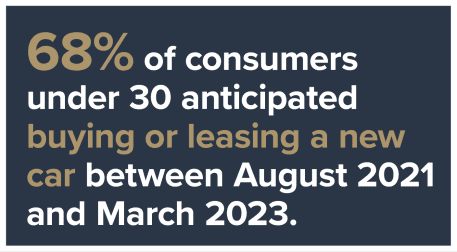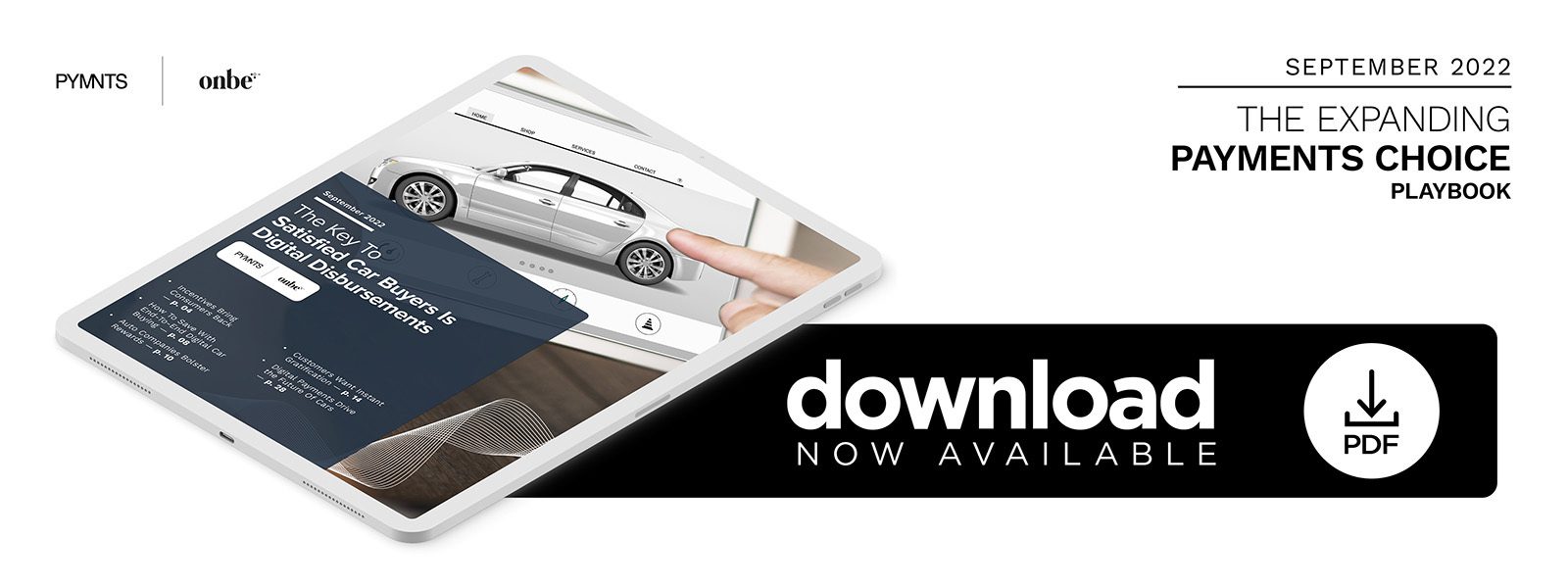PYMNTS Intelligence: Meeting Car Buyers in the Digital Space

Young consumers expect everything faster.
—
Millennials outdistanced baby boomers for the first time in 2020 as the age group buying the most new cars, accounting for 32% of new car purchases.  Sixty-eight percent of consumers under the age of 30 anticipated buying or leasing a new vehicle within 18 months when surveyed in late 2021. With this demographic shift toward younger new car buyers, the demand for an end-to-end digital experience is growing. This applies to rewards programs as well, which are becoming integral to attracting and keeping customers. Even customer payouts are going digital across industries.
Sixty-eight percent of consumers under the age of 30 anticipated buying or leasing a new vehicle within 18 months when surveyed in late 2021. With this demographic shift toward younger new car buyers, the demand for an end-to-end digital experience is growing. This applies to rewards programs as well, which are becoming integral to attracting and keeping customers. Even customer payouts are going digital across industries.
This month, PYMNTS explores how car buying is evolving as part of the larger digital transformation, how consumer demand is reshaping the auto-buying process and which trends dealers and lenders need to follow to stay ahead of the curve.
Building Loyalty Digitally
While dealers have traditionally enjoyed the in-person advantages of building rapport and customer relationships in the showroom, these advantages have been steadily eroding.  As part of a larger, digitally-focused strategy, rewards programs offer a solution to keeping customers engaged, even when they have never set foot in a dealership. Digitally-focused rewards programs can also provide insights and data that help companies better understand and engage with customers.
As part of a larger, digitally-focused strategy, rewards programs offer a solution to keeping customers engaged, even when they have never set foot in a dealership. Digitally-focused rewards programs can also provide insights and data that help companies better understand and engage with customers.
Consumers Want Immediate Incentives
Forty-seven percent of consumers under 30 would choose a $700 prepaid card at signing rather than a lower monthly payment, followed by 44% of those ages 30 to 44. Those same consumers do not want to wait for checks to come in the mail. A truly end-to-end digital experience goes beyond how points are tracked and messages are sent. Consumers overwhelmingly favor digital payments for both their convenience and speed, as well as the ability to be paid in the manner they choose. Nondigital disbursements can degrade the customer experience, and only 20% of consumers wish to be paid with a physical check in the mail.
Digital Disbursements Save Time and Money
Customers are not the only ones who enjoy the advantages of digital disbursements. Businesses can benefit internally from digital disbursements by eliminating manual processes and saving on material costs. Digital disbursements can also be integrated into a cohesive customer experience, encouraging customers to spend that money with the same business that disbursed it. Across industries, a majority of CFOs are prioritizing digital disbursements to increase efficiency and reduce costs, with 71% of CFOs saying they have accelerated payments digitization since 2020.
Across industries, a majority of CFOs are prioritizing digital disbursements to increase efficiency and reduce costs, with 71% of CFOs saying they have accelerated payments digitization since 2020.
Taking Payouts off the Dealer’s Plate
Millennials want instant gratification and smoother digital experiences when buying a car and when receiving payments, whether they be associated with loyalty programs, service center visits or auto loan refunds. By providing better digital experiences that engage consumers online and through mobile devices, the auto industry can increase brand loyalty and gain repeat business.
